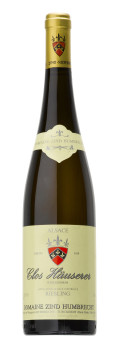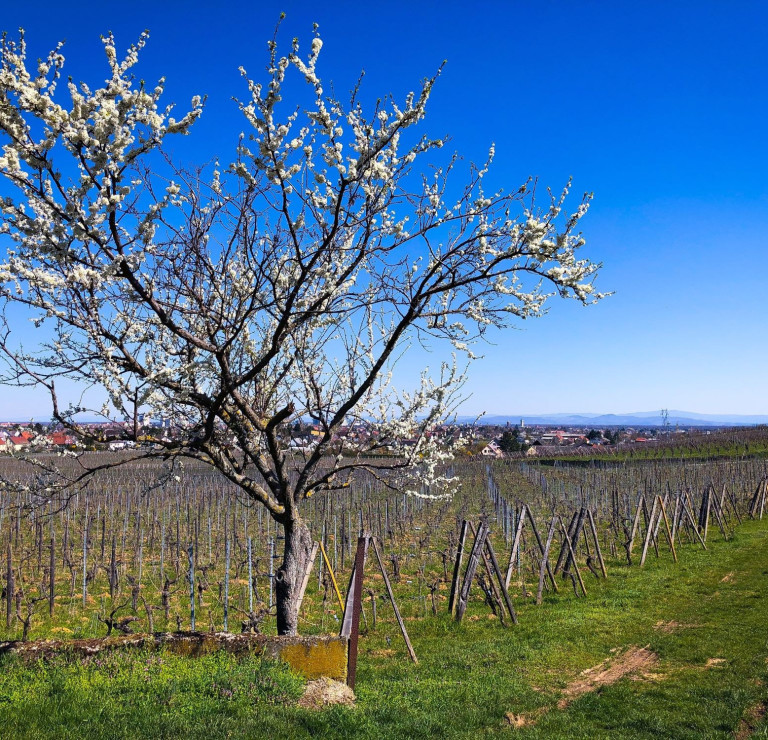
Technical presentation
| Bottling : | September 2010 |
|---|---|
| Acquired alcohol : | 13.5° |
| Residual sugar : | 15.2 g/l |
| Total acidity : | 4.2 g/l H2SO4 (6.4 g/l Acide Tartrique) |
| pH : | 3.2 |
| Yield : | 59 hl/ha |
| Optimum tasting : | 2014-2029+ |
| Average age of vines : | 36 years |
| Terroir : | Clos Hauserer |
| Sweetness index : | 2 |
| Soil : | Calcareous Marl from the Oligocene period, Colluvium, East facing, Very gentle slope |
Description of the wine Riesling Clos Häuserer 2009
The Clos Häuserer is located just under the limit of the Hengst G.C. on a similar rich marl limestone, quite deep, as 50 to 80cm of marl covers the base calcareous mother rock. There is little slope there, as the vineyard is encircled by the hill, but the climate can get very warm in summer and there is good water retention. Clos Häuserer loves warm vintages, at least vintages with warm ripening season. There will always be good acidity here and the wines have always proven to have good ageing potential. In 2009, a slight over ripeness is expected, despite complete absence of noble rot. The fermentation was slow and balance was reached with some light sweetness.

Tasting notes
02/2011 : The Clos Häuserer is perhaps the wine in 2009 that shows the most the lees influence and limestone origin. The nose is not exactly closed, there are massive rocky, iodine and lees aromas, but one can guess that it will take some time and air for the fruity elements to show up. The palate is dominated by powerful minerals and salty flavours. Despite the richness of this wine, there is a refined acidity on the finish that gives a sense of delicacy to the wine. Like most 09s Rieslings, the pH is very low in this wine, which increases the power of the acids. The sweetness is slightly higher, but this wine really doesn’t show it to much. Time needed though !

The Clos Häuserer of Wintzenheim
This soil rich in clay and chalk gives an important structure to the Riesling grown in the Clos Haüserer. Although this vineyard benefits from a warm and precocious climate, ripeness is achieved much later than the surrounding terroirs.